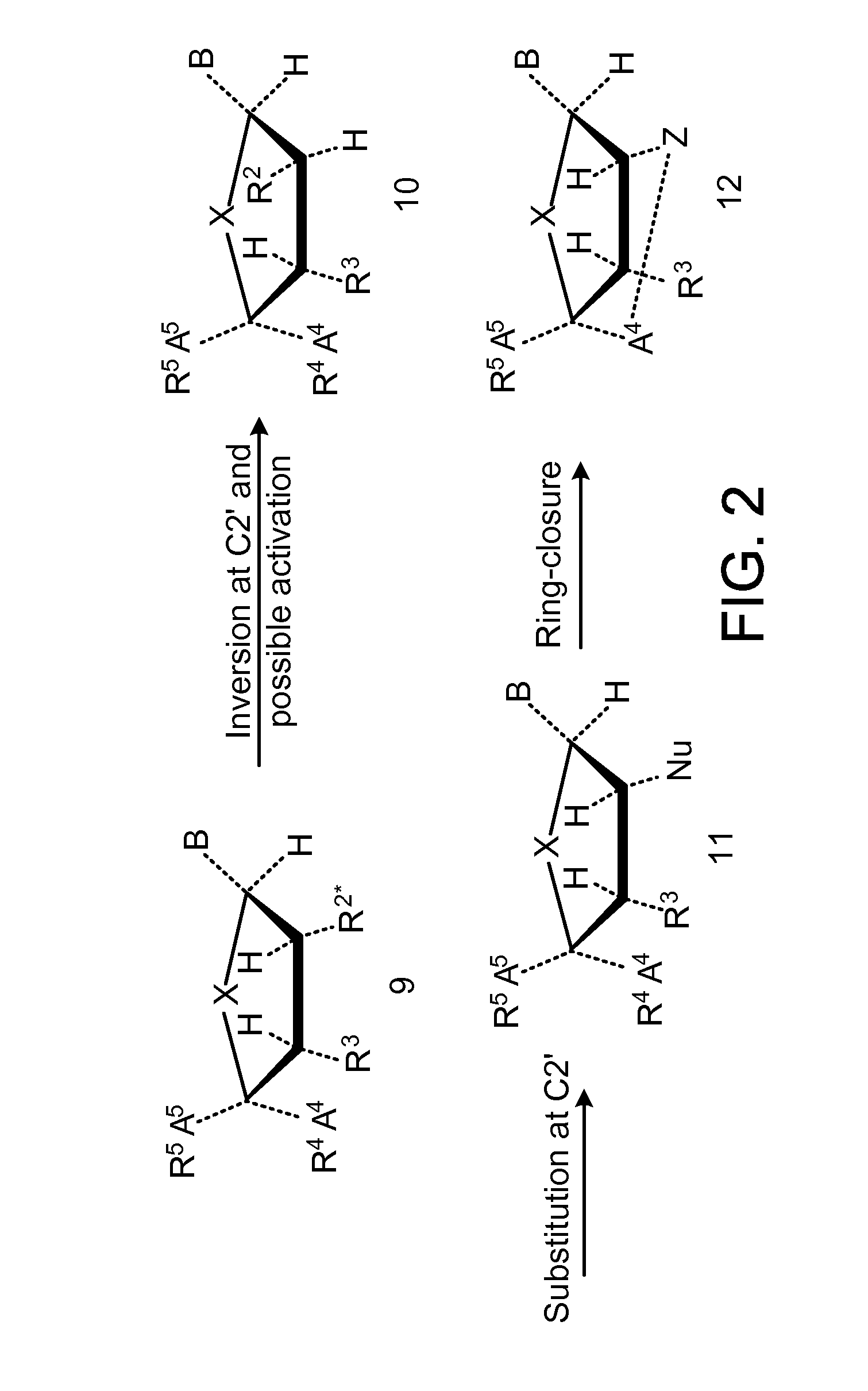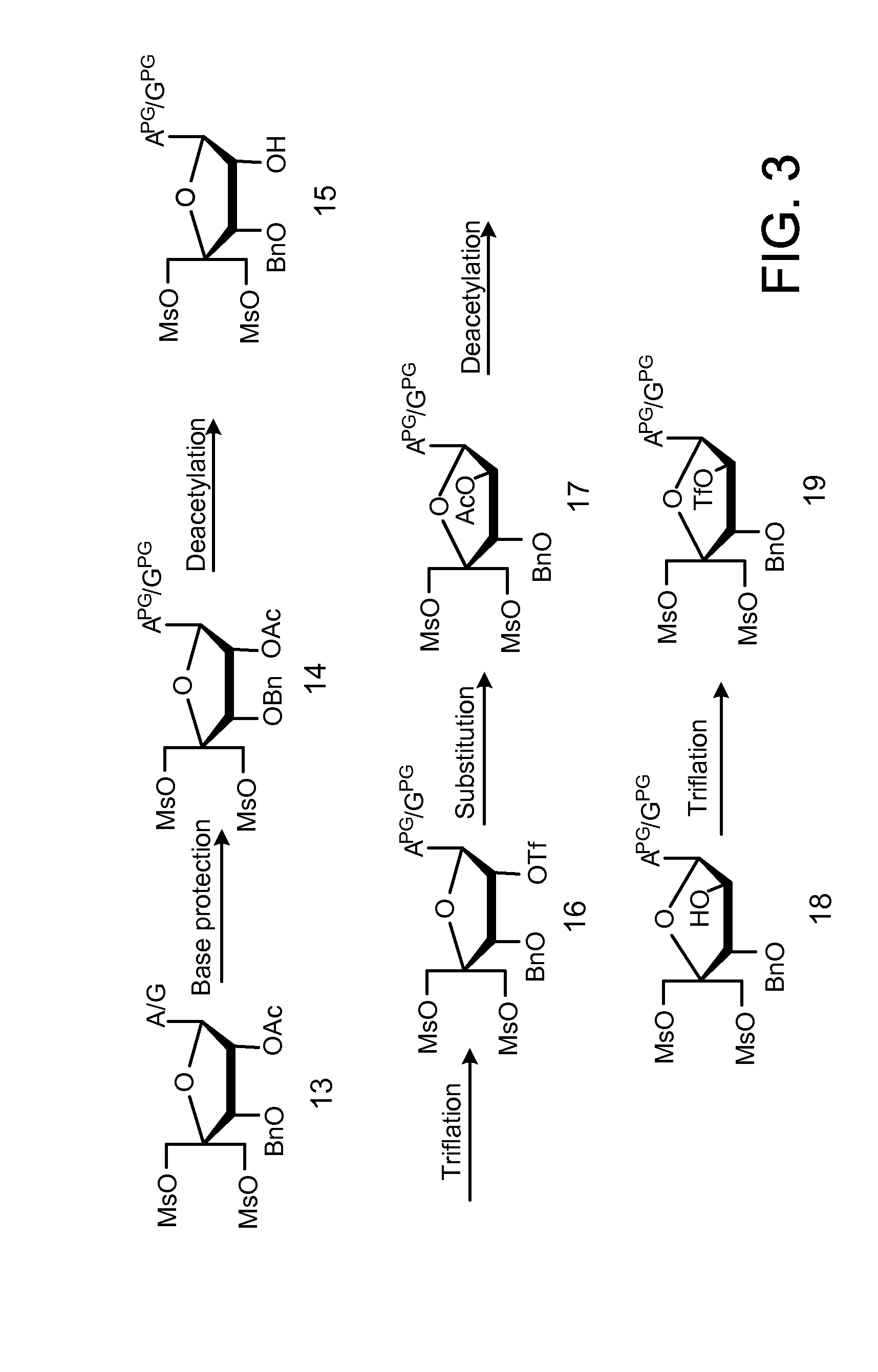Synthesis of locked nucleic acid derivatives
a nucleic acid and derivative technology, applied in the direction of sugar derivatives, biocide, plant growth regulators, etc., can solve the problems of compound 2 being isolated through tedious chromatography of closely eluting products, and unable to scale up the previously described method of synthesis of amino-lna
- Summary
- Abstract
- Description
- Claims
- Application Information
AI Technical Summary
Benefits of technology
Problems solved by technology
Method used
Image
Examples
examples
[0104]For reactions conducted under anhydrous conditions glassware was dried overnight in an oven at 150° C. and was allowed to cool in a dessicator over anhydrous KOH. Anhydrous reactions were carried out under an atmosphere of argon. Solvents were HPLC grade, of which DMF, pyridine, acetonitrile and dichloromethane were dried over molecular sieves (4 Å from Grace Davison) and THF was freshly destilled from Na.benzophenone to a water content below 20 ppm. TLC was run on Merck silica 60 F254 aluminum sheets. Dry Column Vacuum Chromatography (DCVC) was performed according to the published procedure. 1H, 13C, 19F, and 31P NMR spectra were recorded at respectively 400 MHz, 100 MHz, 376 MHz, and 121 MHz with solvents as internal standard (δH: CDCl3 7.26 ppm, DMSO-d6 2.50; δC: CDCl3 77.0 ppm, DMSO-d6 39.4 ppm). 31P NMR was run with 85% H3PO4 as external standard. J values are given in Hz. Assignments of NMR spectra are based on 2D spectra and follow the standard carbohydrate / nucleoside n...
PUM
| Property | Measurement | Unit |
|---|---|---|
| temperature | aaaaa | aaaaa |
| temperature | aaaaa | aaaaa |
| temperature | aaaaa | aaaaa |
Abstract
Description
Claims
Application Information
 Login to View More
Login to View More - R&D
- Intellectual Property
- Life Sciences
- Materials
- Tech Scout
- Unparalleled Data Quality
- Higher Quality Content
- 60% Fewer Hallucinations
Browse by: Latest US Patents, China's latest patents, Technical Efficacy Thesaurus, Application Domain, Technology Topic, Popular Technical Reports.
© 2025 PatSnap. All rights reserved.Legal|Privacy policy|Modern Slavery Act Transparency Statement|Sitemap|About US| Contact US: help@patsnap.com



